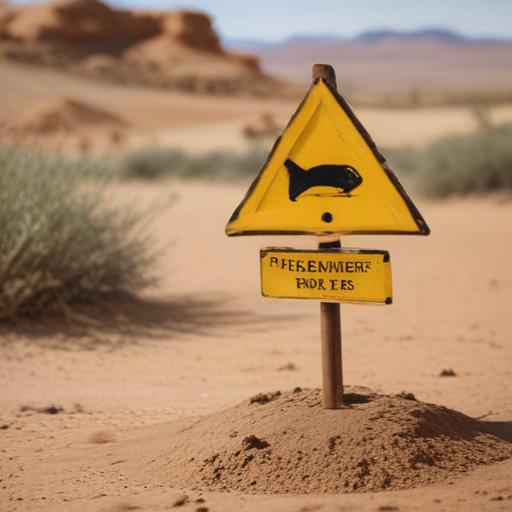Health officials in Coconino County, Arizona, are raising alarms over a concerning die-off of prairie dogs in the Townsend-Winona area, which could signal the presence of the plague, a serious infectious disease that affects both animals and humans. This report comes as officials noticed a sharp decline in the prairie dog population, which typically plays a vital role in the local ecosystem as a food source for various predators and as a contributor to soil health through their burrowing activities.
Eve Wolters, the deputy director of Coconino Health and Human Services, explained that the die-off serves as an indicator species phenomenon, where the health of prairie dogs may reflect broader environmental health issues. “When we see a die-off of prairie dogs, it tells us that something else is going on. Usually, that something is indicative of a plague,” Wolters stated.
The bacterium Yersinia pestis, responsible for the plague, can easily be spread through bites from infected fleas. In light of the reported deaths, CCHHS is collaborating with the affected property owner to collect fleas for testing. Additionally, they have engaged with nearby residents about monitoring the situation and ensuring the proper treatment of rodent burrows.
Wolters emphasized the importance of awareness rather than fear, noting that with modern medical interventions, the plague is treatable if caught early. The Coconino County Health Department maintains a surveillance system for the plague and other diseases, including West Nile virus and rabies, to safeguard public health.
To prevent exposure, health officials recommend several precautions:
– Employ veterinarian-approved flea treatments for pets.
– Keep pets leashed and out of rodent habitats.
– Report any sudden die-offs of prairie dogs or other rodents to CCHHS.
– Eliminate potential rodent nesting sites by cleaning up brush and debris around homes.
– Store food in rodent-proof containers and avoid direct contact with wild animals.
This proactive approach emphasizes community engagement and education, aiming to keep residents safe while raising awareness about the interconnectedness of wildlife health and public safety. By fostering understanding and preparedness, officials hope to mitigate the risks associated with this alarming situation.
